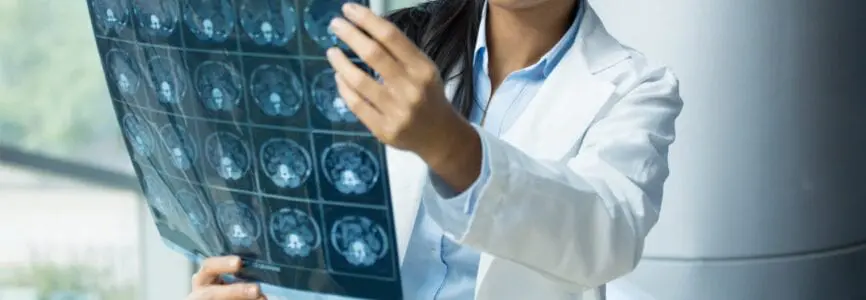Bioethics Forum Essay
Bioethics and the Dogma of “Brain Death”
Two cases involving “brain death” have received considerable public attention, including commentary by several well-known bioethicists. In commenting on these cases the bioethicists have stated, in no uncertain terms, that an individual correctly diagnosed as “brain dead” is dead, pure and simple. Contrary to appearances of being alive, in reality the “brain dead” individual is a corpse. These statements are misleading because they have ignored the long-standing controversy and debate in the professional literature over the determination of death: specifically, whether individuals diagnosed as “brain dead” should be considered dead and, if so, why they are dead.
One of the recent cases involved Jahi McMath, a young patient who suffered massive brain injury following an operation; her parents have insisted that she is alive and that mechanical ventilation and other life-sustaining treatment should be maintained. In the other case a hospital, appealing to state law, continued life-sustaining treatment for a Marlise Munoz, a pregnant “brain dead” woman, over the objection of her family.That treatment ended earlier this week after a Texas judge ruled in favor of the family.
While brain death is legally recognized as death in all 50 states, we are not alone in arguing that the “brain dead” remain alive in view of the biological conception of death established within medicine: the irreversible cessation of the functioning of the organism as a whole. [1] The diagnostic criteria for “brain death,” when correctly applied, demonstrate definitively the presence of an irreversible coma without the capacity to breathe spontaneously. But does that mean that the “brain dead” are known to be dead? Incontrovertible evidence has been developed over the past two decades that those individuals who meet diagnostic criteria for “brain death” can continue to maintain, with the aid of mechanical ventilation, a wide array of biological functions of the organism as a whole, [2] including respiration, circulation, digestion, temperature control, wound healing, and fighting infections. Indeed, relevant to one of the two recent cases in the news, “brain dead” pregnant women with intensive care support have been able to gestate viable fetuses over a period of a few months.[3]
The upshot, we have argued, is that the “brain dead” remain alive, although without any chance of recovering consciousness or breathing spontaneously. It is possible that we are mistaken. Perhaps a cogent rationale can be developed for why the “brain dead” are dead consistent with a biological conception of death; perhaps a consciousness-based standard for determining death can be defended, despite the theoretical and practical difficulties that such a view must face. What is unmistakable, however, is that there is no consensus in the bioethics literature that “brain death” constitutes death. Indeed, this is signified unequivocally by the title (and content) of a 2008 report by The President’s Council on Bioethics, “Controversies in the Determination of Death.”
How, then, should we evaluate recent bioethics commentary in the new media endorsing the dogma that the “brain dead” are known to be dead? Here we are interested in provoking reflection on this question as a general matter regarding bioethics scholarship and public communication, rather than quoting and criticizing the commentary of specific named bioethicists.
Journalists frequently interview bioethicists to help the public understand complex and perplexing ethical issues posed by the use of medical technology. They are consulted because of their expertise as bioethics scholars. Likewise, bioethicists rely on their expertise in posting blogs aimed at contributing to public understanding and discussion of these issues. To do this competently is challenging, especially in the context of journalists seeking pithy “sound bites.” Yet some guidelines certainly should apply. Public statements of bioethicists should reflect, or at least not misrepresent, the professional literature on the topic under discussion. And bioethics commentators should endeavor not to over-simplify the complexity of the relevant facts and the state of ethical thinking about the facts. Embracing the dogma that “brain death” constitutes death, put forward as the uncontested truth, flies in the face of a minimal standard for bioethics commentary.
How might bioethicists address the complex issues surrounding “brain death” in public commentary without compromising the integrity of bioethics scholarship? We submit that no bioethics commentary on cases involving “brain death” is intellectually acceptable in the absence of acknowledging that there is vigorous controversy in the field over the determination of death and the status of those diagnosed as “brain dead.” To be sure, this acknowledgment complicates the task of bioethics commentary. Once the controversy and debate in the professional literature is duly recognized, various ways of characterizing the issues at stake are out of bounds. These include confident statements that the “brain dead” body is no longer a patient; that mechanical ventilation is no longer “life support,” as the patient certainly is dead; and that maintaining this treatment is merely ventilating a corpse.
In the absence of certain death, the resolution of the ethical issues is less obvious. It can be argued that, with some exceptions, there is no point in continuing life-sustaining treatment for individuals who have been correctly diagnosed as “brain dead.” Exceptions include procuring organs for transplantation, which was not at stake in either of these two cases, or to gestate a fetus when this is consistent with the prior preference of the “brain dead” individual or the substituted judgment of the family. The rationale for stopping life-sustaining treatment is not that these individuals areknownto be dead already; rather, continued life-sustaining treatment in the hospital for individuals who have no chance of recovering from a comatose state is a misuse of this scarce resource. More complex is the issue of transferring the “brain dead” patient to a long-term care facility at the insistence of the family, as was the case with Jahi McMath, and whether that option should be supported by public funding.
While “sound bite” statements don’t permit much complexity or nuance, they should not misrepresent the facts. In helping the public navigate the complexity of ethical issues in medicine, we should expect bioethicists to clarify these issues, within the constraints of the public forum, without making dogmatic pronouncements that do not accurately reflect the state of bioethics scholarship.
Franklin G. Miller, Ph.D., is a member of the senior faculty in the Department of Bioethics, National Institutes of Health. Robert D. Truog, M.D., is a professor of medical ethics, anesthesiology, and pediatrics at Harvard Medical School and a senior associate in critical care medicine at Children’s Hospital, Boston. The opinions expressed are the views of the authors and do not necessarily reflect the policy of the National Institutes of Health, the Public Health Service, or the U.S. Department of Health and Human Services.
1. F.G. Miller, R.D. Truog. Death, Dying, and Organ Transplantation: Reconstructing Medical Ethics at the End of Life(New York: Oxford University Press, 2012.
2. D.A. Shewmon, “Chronic ‘Brain Death: Meta-analysis and Conceptual Consequences,” Neurology51, no. 6 (1998): 1538-1545.
3. Yeung P, Jr., McManus, C, and Tchabo J-G, “Extended Somatic Support for a Pregnant Woman with Brain Death from Metastatic Malignant Melanoma: A Case Report,”Journal of Maternal-Fetal and Neonatal Medicine21 (2008): 509-11.
Posted by Susan Gilbert at 02/03/2014 11:59:30 AM |













